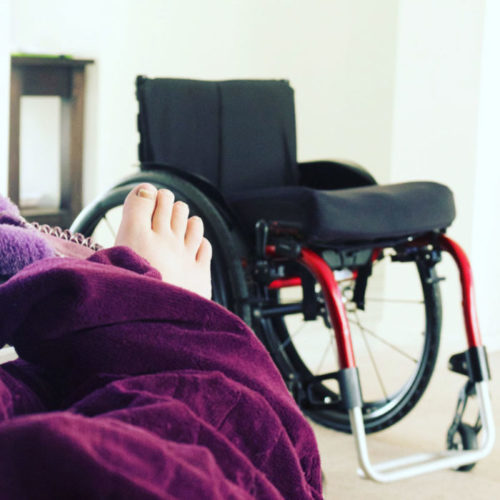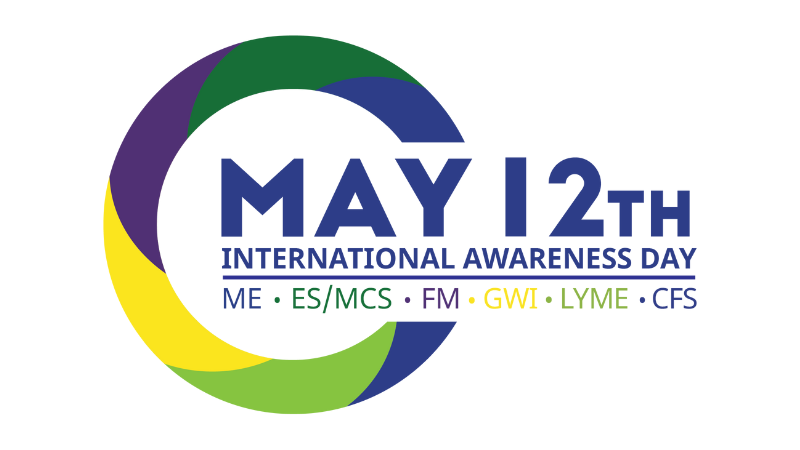

The National Disability Insurance System (NDIS) is the brave new hope in disability care in Australia. My journey to get funding to help me with my disabling rheumatoid arthritis has been long and arduous.
NDIS works like this. Each participant is assessed individually on their capabilities and needs and is awarded a funding package for their care. This funding package can be used by the individual as they see fit, accessing the services they need and employing the providers they choose.
This is a huge improvement on the old model of disability care, where you basically took the services that were available in your area. “Choice and control” is the mantra of the NDIS.
The concept of “goals” is very important to the NDIS. Each participant decides on their goals. E.g. improve or maintain their independence, access the community and participate in social functions, pursue study, etc and the NDIS will fund reasonable and necessary supports to achieve those goals.
In theory, it’s wonderful. In practice, as with so many things, there are major problems. For me, I believe it amounted to inexperienced staff not having enough training or the right training and experience to perform effectively. It’s a long story, so I’ll condense it down to a timeline of events to try and keep it short!
July 2016 – NDIS rolled out in my area
I applied to the NDIS to be a participant.
October 2016 – Initial assessment
I’d heard that the initial assessment was gruelling and it was very hard for those with medical conditions, especially invisible illnesses, to get approval. Besides my Local Area Co-ordinator (LAC) having never heard of seronegative arthritis, it was a pretty simple process. There were forms to fill out. Medical reports to submit. Pretty standard stuff.
We decided on my goals. Given that I was mostly housebound, my most important goal was improved mobility and the ability to access the community. My second goal was some home modifications to allow me to move safely around my home. Additional goals included home help, physiotherapy and hydrotherapy.
November 2016 – Plan approved
My plan was approved. The funding was available on the portal, but I didn’t know how to use the funds. I tried to contact my LAC for advice.
December 2016 – telephone tag
Telephone tag since November, trying to find out how to spend my funds. LAC on leave, then travelling for work, then Christmas leave, then New Year, then more leave.
Mid-January 2017 – plan explained
My LAC came to my house to explain my plan. She couldn’t work it out either. Finally realised I was “NDIS managed” which meant I could only use NDIS registered support services.
I asked her how to find these services. She gave me a 15GB PDF file of all the providers in the state with no way to narrow down possible providers. (Note: there is now an online database to make this process easier.)
She then told me there were no NDIS registered providers in my area yet (I was in one of the early rollout areas) so I would need to be changed to “self-managed” so that I could use providers who weren’t necessarily NDIS registered.
The only way to change me over was with a “review”. This review would take three to six months to complete. There was no other choice.
End January 2017 – three months since plan approved
I agreed to a review. A review means another interview. It would be a phone interview this time – for speed.
The purpose of the review was to change my plan to being “self-managed” so that I could access and allocate the funding already approved and choose my own service providers – who weren’t necessarily registered with the NDIS. Other problems I’d found were the lack of funding for an occupational therapist (OT) – essential for getting a wheelchair – and getting home modifications approved. The rest of my plan would remain the same.
End February 2017 – four months since plan approved
The phone interview was cursory, it sounded like a “tick and flick” checklist. I emphasised my needs, but I hung up feeling that I hadn’t been heard, let alone understood.
End of March 2017 – six months since plan approved
At the end of March 2017, my review was approved. I still hadn’t received any actual help at this point. This time I’d been set up as “plan managed”. Like “self-managed”, it meant that I COULD hire workers who weren’t necessarily NDIS registered, but a plan management company was handling my invoicing. This was supposed to make it easier for me to manage my finances, but in practice, all it did was add another layer of complexity.
That wasn’t a deal-breaker, however. But somehow in the review, they had forgotten about the wheelchair and the home modifications. No funding was included for any mobility devices – and this was my number one priority! My number one goal!
When I enquired, I was told that there was a “placeholder” amount of $1 in my plan and this was in lieu of quotes arising from the OT assessment. When the OT had done her reports, quotes would be tendered to provide the services and equipment she recommended and then that amount of funding would be released. I expressed doubts, but I was told to go ahead and book the OT and get all my assessments done, and, “Everything would be taken care of. Don’t worry.”
I moved forward, having no choice but to believe what I’d been told. I found a gardener and a cleaner who came for two hours a week. I found an OT. The wait for her services was four months. Four months until she could start working with me to do the assessment. Another one to two months for her to write up her reports. And then three months for the NDIS to process her reports, get quotes and release the funding. Probably another nine months until the wheelchair and home modifications could be done.
Too long, but there was no changing it or speeding up the process. So, I bought myself my own wheelchair. I had to borrow funds to do it. I bought it second hand, along with a power assist, on eBay. I needed the wheelchair and I couldn’t wait any longer.
August 2017 – eight months since plan approved
I received the OT reports and quotes for the chair and home mods. On submitting them to the NDIS I was told, “There is no funding in your plan for this”.
Gob-smacked, I told the person on the end of the line what I’d been told previously: that I had placeholder funds awaiting the final quotes.
She said, “That’s not how we do it anymore. You don’t have funding for this. YOU WILL NEED ANOTHER REVIEW.”
Almost a year after my original plan was approved, and already one review down, they told me I needed ANOTHER review to fund items that were approved in my original plan. Three reviews in under a year.
I gave up. Too hard. I accepted that I was going to have to fund myself. Without the home modifications, my home wasn’t safe for me to live in. I made the very difficult decision to move to a more suitable house, in a more well-serviced area, closer to shops, medical and other facilities.
It made logical sense … but this was my home. I didn’t want to leave and losing my home was very difficult. If I truly had “choice and control” I would have chosen to stay in the house I loved.
November 2017 – one year since plan approved
I put my house on the market in November 2017.
I notified the NDIS that I was moving, and that I was looking for a more accessible and disability-friendly house. No one informed me that NDIS could fund some moving expenses. By the time a friend informed me of this, it was too late.
Additionally, the NDIS required the impossible. They agreed that my house was not suitable. They agreed that it would be cheaper to move than fully adapt my old home. But, to fund some of the moving expenses, they required a full OT assessment on the new property. Given that there is a four-month wait on OT reports, this was impossible. Also, you can’t claim the expenses retrospectively.
They had me locked up. I couldn’t fight anymore. At this point, the NDIS had caused me more grief than it had been worth. My physical condition had deteriorated further and I just didn’t need the mental and emotional stress of fighting for help.
May 2018 – 18 months since plan approved
I moved into my new house. It was far more accessible, despite being 2 stories. I installed a stairlift at my own expense.
My third review was approved, allowing me to make some minor home modifications. My wheelchair was ordered.
My OT, feeling empathy for me as she’d watched in horror the nightmare that was my NDIS experience, squeezed me in to her incredibly busy schedule for a home assessment. She fast-tracked the quotes and pushed hard for the wheelchair.
June 2018 – 19 months since plan approved
The tradesmen came and installed a ramp at the back door, and some bathroom and shower rails. They also installed a hand-held shower head. I had already bought my own shower chair and toilet seat riser.
I experienced a major exacerbation of my condition, pinched nerves and herniated disks in my spine causing permanent left-sided numbness and paralysis. The NDIS recommended I have a fourth review, given the change in circumstances, to cover additional needs. I respectfully declined, knowing how long the process would take, opting to use my current plan.
End of August 2018 – one year and nine months since plan approved
I had been waiting three months for the wheelchair that was supposed to arrive in six to eight weeks. It arrived last week.
The supplier decided to change the measurements, and they provided a wheelchair that is much wider than I was measured for. This wider wheelchair does not easily fit through the internal access door from the garage that is the only flat access inside the house. It is also heavier and doesn’t fit in my car. They are refusing to take it back and provide the wheelchair that the OT measured for me.
The fight continues.




